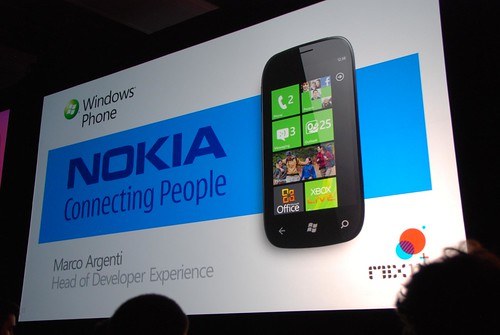Symbian was ditched – for good reason

I know this post is going to lead to a lot of derision from readers but to be perfectly honest, brutal honesty is necessary from time to time. Yesterday, Nokia announced their update to Symbian, named Anna which brought to the platform a number of key improvements including a new browser, updated homescreen animations, the long-awaited portrait QWERTY keyboard and few under-the-hood touches such as Qt 4.7 and Qt mobility 1.1 API’s in addition to  updated Ovi Maps and Ovi Store applications. The general response to the update is positive with many users speaking out about their anticipation for the impending update.
As for myself,I find myself wondering how and why it has taken so long to implement what appear to be painfully simple updates. Symbian^3 was first shown as far back as April of 2010 and only now, April of 2011 are we getting a decent time-frame for the first major update to the platform. While the Anna update is significant in and of itself, comparing the rate of development of the platform to its competitors like Android or even Windows Phone 7 yields a startlingly different perspective.
In less than a year, Android went from version 2.1 to version 2.3 with a whole raft of changes and additions including better VPN, updated file systems, support for multiple cores, tons of UI refinements, integrated tethering, better bluetooth support AND a tablet compatible version of the OS!!!
Windows Phone 7 similarly has gone from being an iOS 2.0 esque knock-off to possessing features that even the staunchest Symbian fans can appreciate. Copy and Paste functionality (which is better than Symbian^3), multi-tasking, Â socket support for apps like Skype, Kik Messenger et al , custom ringtones, better push notifications, access to camera hardware and contacts, ability to encode and decode captured video streams on the fly and tons of other features in addition to ~1500 new API’s for developers to use. It’s even more sad to see that in some of these features being introduced, that the implementation is tons better than that in Symbian.

Let’s take multitasking for example, in Windows Phone 7 applications are more or less frozen CPU-wise when not in the foreground. However, a chosen percentage of CPU time is allocated to checking whether or not the multitasking “agents” have met certain criteria for the activation of the background application. As opposed to limiting the ability to run in the background completely to a chosen set of API’s, developers can choose to monitor certain conditions on a chosen, timely fashion and based on these conditions, activate the background application. This prevents system bog-down or loss of responsiveness of the foreground application while still “running” the background application.

Coupled with the push notification system, the idea is to minimize resource (battery in particular) usage while simultaneously maintaining functionality and the user doesn’t see an interruption in their workflows.
In the video below, which is an interview with Joe Belfiore, we see him talking about a number of updates to the platform in addition to examples of how multi-tasking and inter-application communication and device integration have come along since Microsoft’s first release.
I won’t go into much detail as to the content of the video (Silverlight is required) but suffice to say that if the level of progress, attention to detail, fluidity of user interaction and intuitiveness don’t appeal to you in some way, then you’re either jaded or need to get your head examined.
This is not at all to say that Windows Phone 7 is perfect. It is far from; live-tiles and notifications could sure use a LOT of work, while the browser still doesn’t support embedded Flash or Silverlight video (I’m unsure of IE9’s support of HTML5 video), there’s no user accessible file system, MicroSD card storage is flakey etc, etc. But if the rate of development of WP7 we’ve seen in the last 6 months alone, development reminiscent of  Android’s early days, are anything to go by I’m rather glad that Nokia chose this route as opposed to their painfully slow development trend with Symbian.
PS. All of these “updates” to Windows Phone 7 will be available to devs by next Month with the end-users getting these updates later in the summer.
Via Read Write Web, WP Central, Channel9, MIX2011
Category: Nokia





Connect
Connect with us on the following social media platforms.